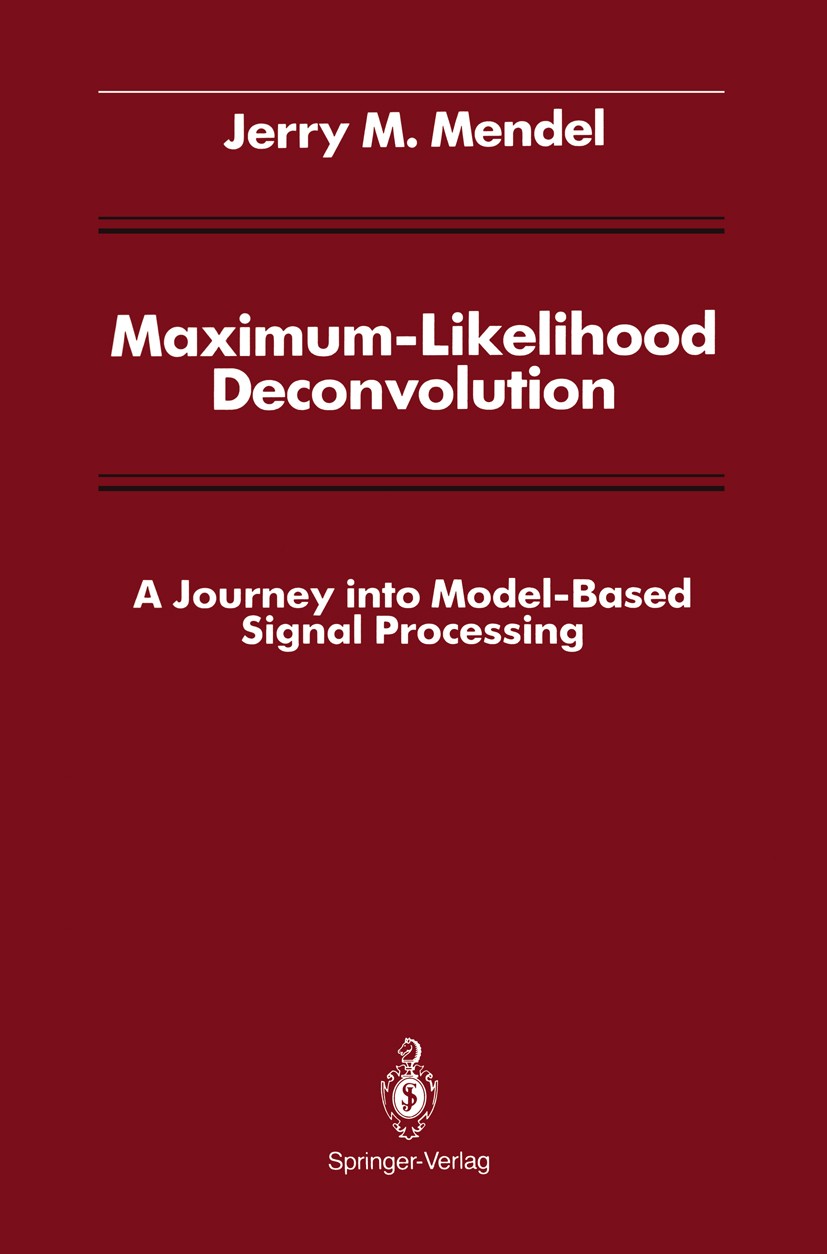| 書目名稱 | Maximum-Likelihood Deconvolution |
| 副標(biāo)題 | A Journey into Model |
| 編輯 | Jerry M. Mendel |
| 視頻video | http://file.papertrans.cn/628/627924/627924.mp4 |
| 叢書名稱 | Signal Processing and Digital Filtering |
| 圖書封面 |  |
| 描述 | Convolution is the most important operation that describes the behavior of a linear time-invariant dynamical system. Deconvolution is the unraveling of convolution. It is the inverse problem of generating the system‘s input from knowledge about the system‘s output and dynamics. Deconvolution requires a careful balancing of bandwidth and signal-to-noise ratio effects. Maximum-likelihood deconvolution (MLD) is a design procedure that handles both effects. It draws upon ideas from Maximum Likelihood, when unknown parameters are random. It leads to linear and nonlinear signal processors that provide high-resolution estimates of a system‘s input. All aspects of MLD are described, from first principles in this book. The purpose of this volume is to explain MLD as simply as possible. To do this, the entire theory of MLD is presented in terms of a convolutional signal generating model and some relatively simple ideas from optimization theory. Earlier approaches to MLD, which are couched in the language of state-variable models and estimation theory, are unnecessary to understand the essence of MLD. MLD is a model-based signal processing procedure, because it is based on a signal model, nam |
| 出版日期 | Book 1990 |
| 關(guān)鍵詞 | Signal; entropy; filter; filters; information; model; simulation |
| 版次 | 1 |
| doi | https://doi.org/10.1007/978-1-4612-3370-1 |
| isbn_softcover | 978-1-4612-7985-3 |
| isbn_ebook | 978-1-4612-3370-1Series ISSN 1431-7893 |
| issn_series | 1431-7893 |
| copyright | Springer-Verlag New York Inc. 1990 |
 |Archiver|手機(jī)版|小黑屋|
派博傳思國際
( 京公網(wǎng)安備110108008328)
GMT+8, 2025-10-8 21:09
|Archiver|手機(jī)版|小黑屋|
派博傳思國際
( 京公網(wǎng)安備110108008328)
GMT+8, 2025-10-8 21:09


